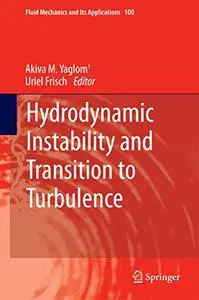Hydrodynamic Instability and Transition to Turbulence by Akiva M. Yaglom
English | PDF | 2012 | 600 Pages | ISBN : 9400742363 | 110.8 MB
This book is a complete revision of the part of Monin & Yaglom's famous two-volume work "Statistical Fluid Mechanics: Mechanics of Turbulence" that deals with the theory of laminar-flow instability and transition to turbulence. It includes the considerable advances in the subject that have been made in the last 15 years or so. It is intended as a textbook for advanced graduate courses and as a reference for research students and professional research workers.
The first two Chapters are an introduction to the mathematics, and the experimental results, for the instability of laminar (or inviscid) flows to infinitesimal (in practice "small") disturbances. The third Chapter develops this linear theory in more detail and describes its application to particular problems. Chapters 4 and 5 deal with instability to finite-amplitude disturbances: much of the material has previously been available only in research papers.
Thanks For Buying/Renewing Premium From My Blog Links To Support
Without You And Your Support We Can't Continue
Without You And Your Support We Can't Continue



